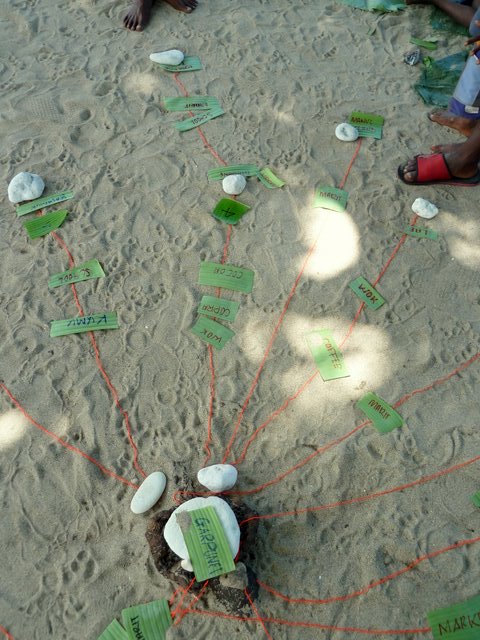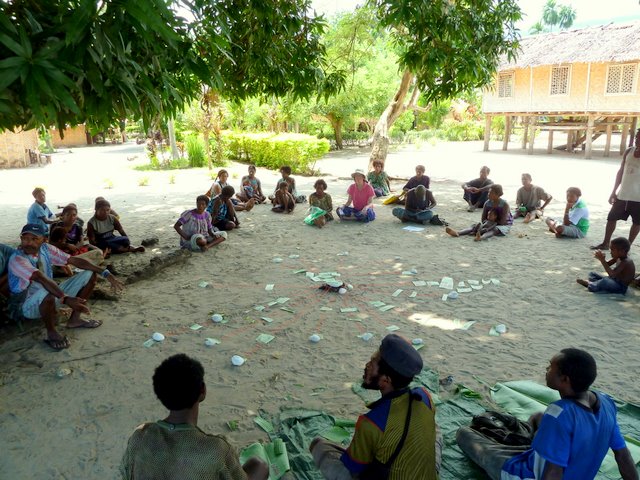Social Connections Tool
From SurveyWiki
(Redirected from Community Connection Tool)
Jump to navigationJump to searchPurpose
The purpose of this tool is to reveal the types and number of connections that one community feels they have with other communities. These connections could be marital, social, trade-based, educational, etc. They need not be positive either. Connections could emerge which are negative, such as conflict. The tool also aims to evaluate these connections thus informing decisions about potential community participation in language development.
Materials
- pieces of paper (or pieces of banana leaves)
- bold markers
- a reel of string - preferably brightly coloured
- as many stones as places they will have connections with

Detail of Malalamai village connections. Garpunei was the name that the community gave for their village. Malalamai is the government name. Each white stone represents a village that Garpunei is connected with. The string represents these connections and the banana leaves are labels indicating what kind of connection (work, school, trade, etc.) exist. Madang Province, February, 2011.
Procedure
| Step # | Ask/Say | Do |
|---|---|---|
| 1 | What's the name of your village? | - |
| 2 | What is another place that your village has a connection with? | Put down a stone to represent their village and another to represent the place they have a connection with. Lay a string between them. As you do this, describe what these things represent. Ask whether someone can label the stone with the village name. If they cannot, do this for them based on what they say. |
| 3 | Let’s talk about this connection. What kinds of connection do you have with this other place? | As they describe the connections, have them draw a symbol to represent each connection, and ask them to place these symbols on the string. |
| 4 | What other places do you have connections with? What kinds of connections are they? | Repeat step 3 ensuring that if similar connections are described, the same symbol is used to represent these. Continue this process as long as the community has something to offer. |
| 5 | Are there any places that are a long way away that you have a connection with? | If needed, prompt them for different kinds of connections and try to ensure that even geographically remote places are considered. |
| 6 | I’d like to ask about ____? | Place a stone on the ground somewhere in the map to mark a specific place you want information about. Note: The people may not mention all the communities that are relevant to your research. If they do not, carry out this step to elicit the status of connections with those remaining communities. If they do not know the communities or have no connections just leave the stones as they are. |
| 7 | Which is the number one place you have a connection with? | Show them a piece of paper with a number 1 on it and ask them to put this on one of the places/stones. |
| 8 | Which place is number one from the places that remain? | Help them to rank the remaining places until there’s only one left by handing them a number 2 (if they don’t write one themselves), 3, 4, etc. |
Go back to Participatory Methods main page.

